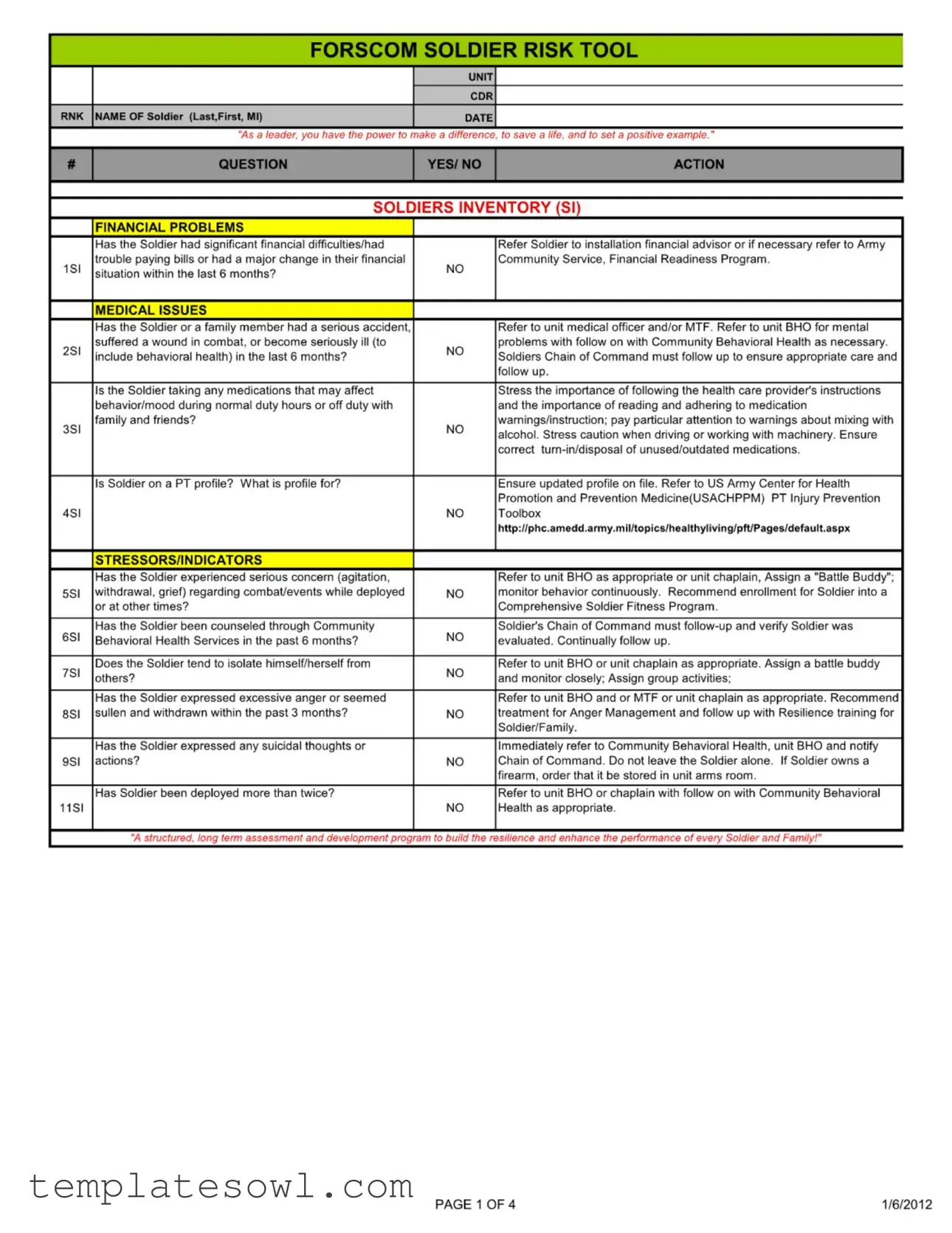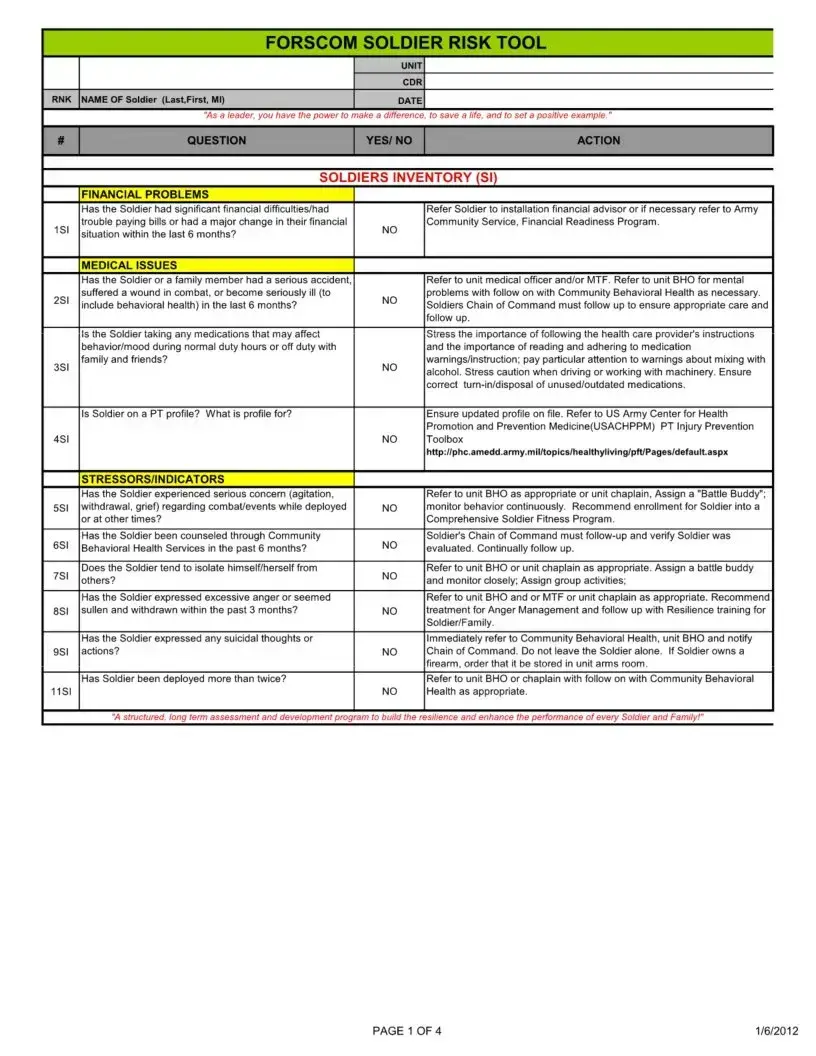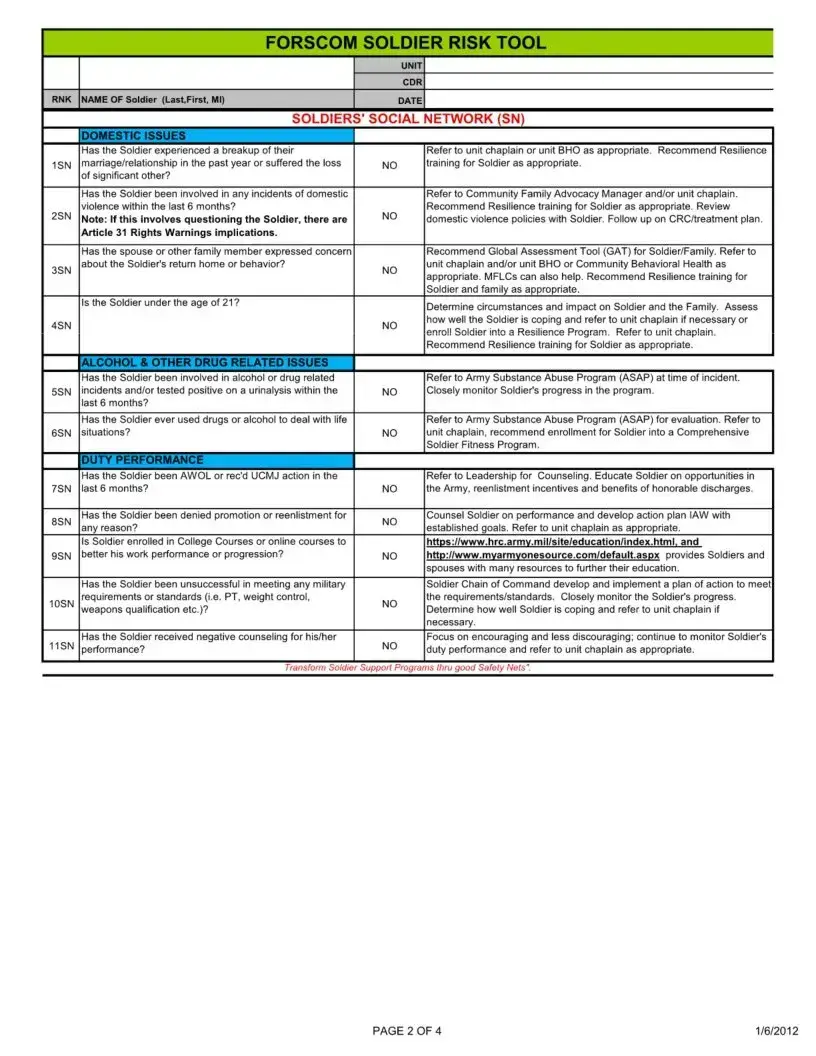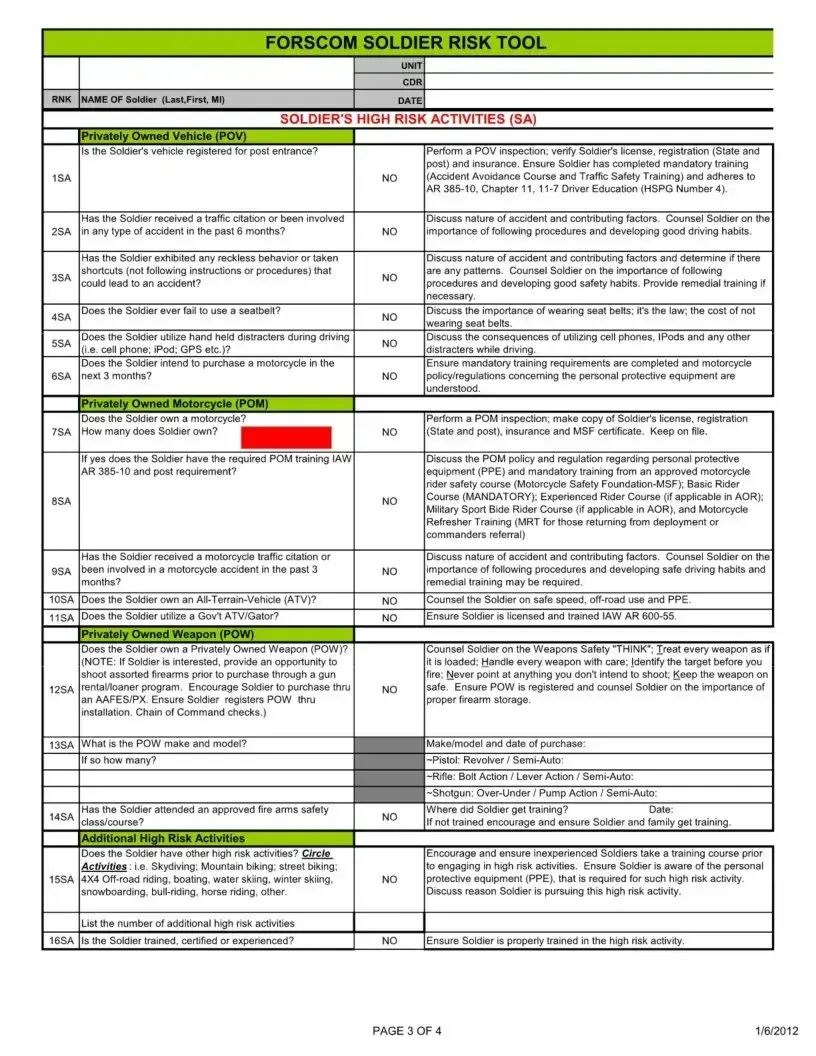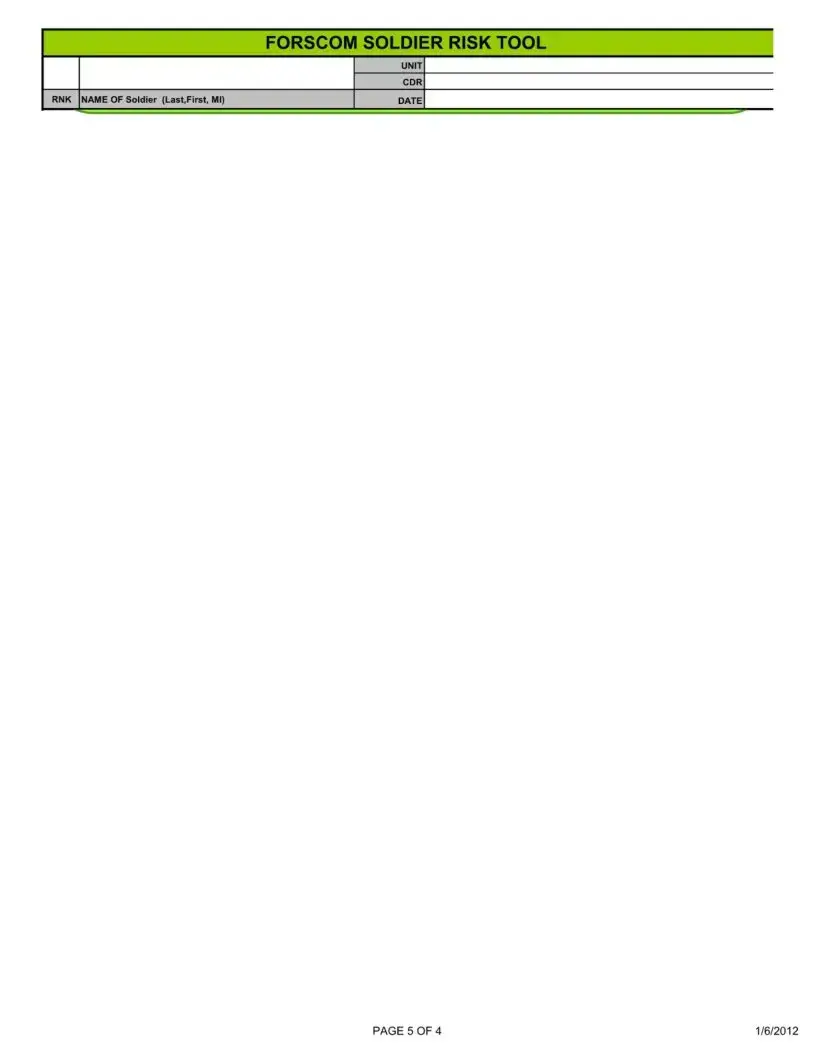What is the Forscom Soldier Risk Assessment form?
The Forscom Soldier Risk Assessment form is a tool used by leaders to evaluate the overall well-being of soldiers. It assesses various factors such as financial issues, medical concerns, social networks, domestic issues, and duty performance. The goal of this assessment is to identify potential risks and to ensure soldiers receive necessary support and interventions to safeguard their mental and physical health.
Who should complete the Forscom Soldier Risk Assessment form?
The form should be completed by unit leaders or commanders who are responsible for the welfare of soldiers. It is particularly important during regular check-ins or after specific events that may elevate a soldier's risk factors, such as deployment or personal loss.
What actions should be taken if a soldier flags certain risk factors?
If a soldier flags any risk factors, such as financial issues, substance abuse, or emotional distress, immediate action should be taken. This may involve referring the soldier to appropriate resources, such as financial advisors, medical officers, or behavioral health professionals. Continuous monitoring and follow-up are crucial to provide ongoing support.
How often should the Forscom Soldier Risk Assessment form be filled out?
The Forscom Soldier Risk Assessment form should be completed regularly, especially during key transitions in a soldier’s life, like deployments or significant personal changes. Additionally, it may be necessary to reassess soldiers who previously displayed risk factors to ensure they have received the required support and that their situation has improved.
What should be done if a soldier expresses suicidal thoughts?
Immediate action is paramount if a soldier expresses suicidal thoughts. The soldier should be referred to Community Behavioral Health and their unit behavioral health officer (BHO) immediately. It is critical not to leave the soldier alone until professional help is on the way. If the soldier possesses a firearm, it should be stored safely in the unit armory.
Can a soldier’s family contribute to the assessment?
Yes, a soldier’s family can provide valuable insight into their well-being. Concerns expressed by family members regarding the soldier’s behavior or emotional state should be considered during the assessment. Resources such as the unit chaplain and behavioral health services can assist both the soldier and their family.
What resources are available to soldiers who need help?
A variety of resources are available to assist soldiers in need, including the Army Community Service, Behavioral Health Services, the Army Substance Abuse Program, and financial advisors. Additionally, programs like the Comprehensive Soldier Fitness Program offer tools to enhance resilience and support overall mental health.
